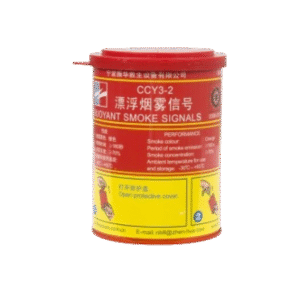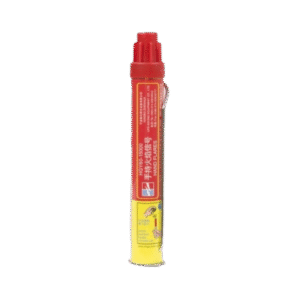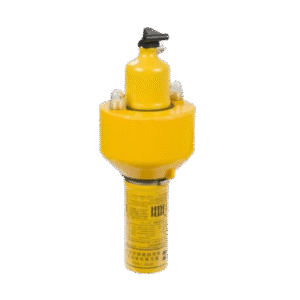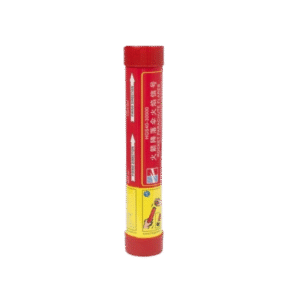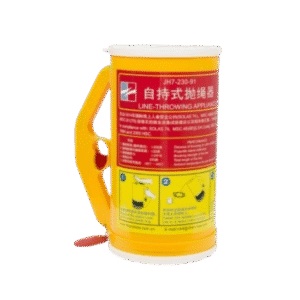Marine Pyrotechnics
View Edtech's Range Of Marine Pyrotechnics
Marine pyrotechnics are specialised signalling devices used at sea to indicate distress, attract attention, or communicate specific messages during emergencies. Common types include hand flares, rocket parachute flares, and smoke signals. These devices are typically part of a vessel’s mandatory safety equipment and are designed to function reliably in harsh marine environments. Constructed to be water-resistant and highly visible, marine pyrotechnics emit bright light, smoke, or both, making them effective for use in low visibility conditions such as fog, darkness, or heavy seas. They are usually activated manually and have a short but intense operational duration, providing a vital means of signalling during rescue operations.
Products
-

Floating Smoke Signal – CCY3-2
Product successfully added to the Quote List
-

Hand Flare – HGY60-15000
Product successfully added to the Quote List
-

Lifebuoy Self- Activating Smoke Signal with Light – QCYD I 15-2-2
Product successfully added to the Quote List
-

Rocket Parachute Flare – HGS40-30000
Product successfully added to the Quote List
-

Self-Contained Line Throwing Unit – JH7-230-91
Product successfully added to the Quote List
View Other Categories
5 Ways Marine Pyrotechnics Enhance Safety
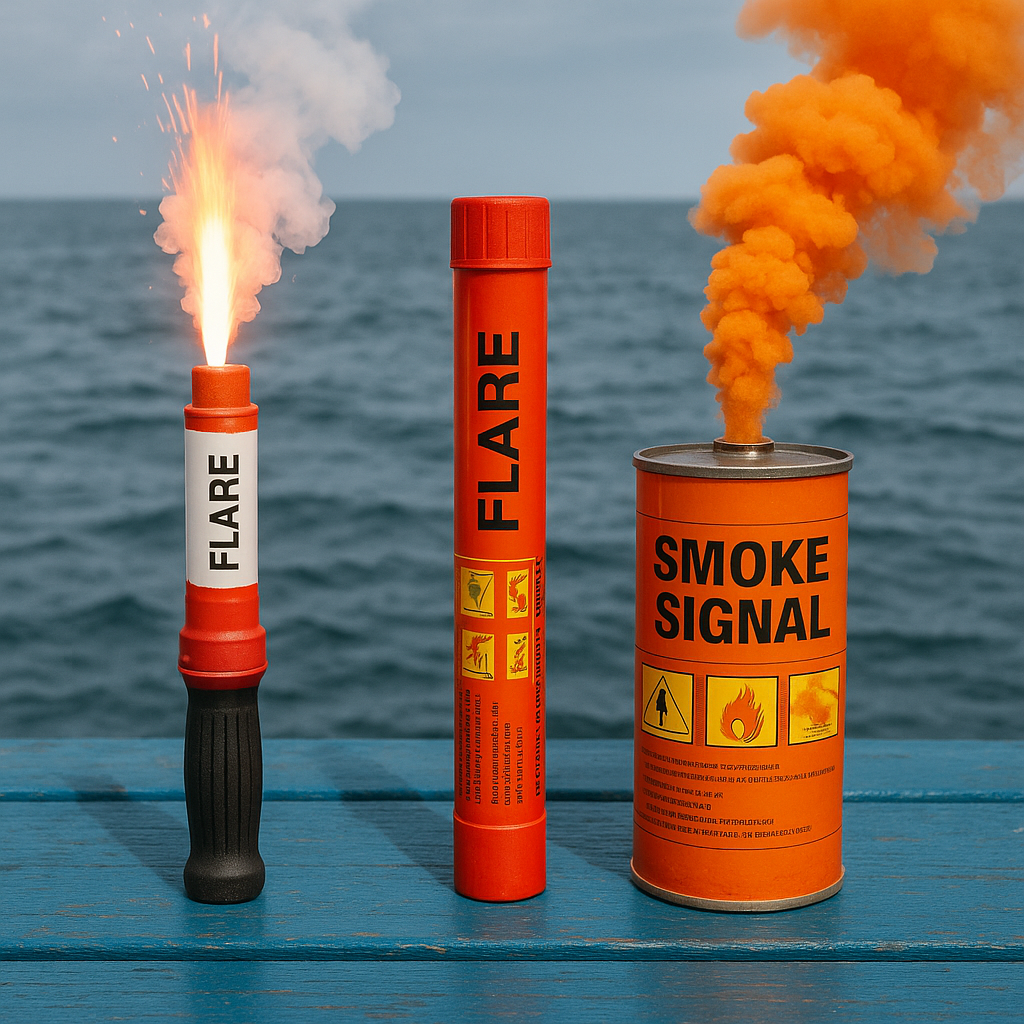
When it comes to maritime safety, preparation is everything. One essential component of any vessel’s safety equipment is marine pyrotechnics. Whether you’re operating a commercial ship, fishing vessel, or private yacht, marine pyrotechnics provide a reliable and effective means of distress signalling. These specialised devices, which include hand flares, rocket parachute flares, and smoke signals, are designed to attract attention and communicate emergencies at sea. In this article, we’ll explore five key ways marine pyrotechnics enhance safety for vessels and their crew.
Marine pyrotechnics offer one of the quickest and most visible methods of alerting others to a distress situation. Hand-held flares and rocket parachute flares emit bright, high-intensity light that can be seen from great distances — both by nearby vessels and aircraft. Smoke signals, on the other hand, produce dense, coloured smoke that stands out against the sea surface, especially in daylight.
In an emergency, every second counts. The ability to deploy a signal within seconds can significantly increase the chances of being located and rescued promptly. Unlike electronic systems, which may require power or connectivity, pyrotechnic devices work independently, offering a fail-safe solution when all else fails.
One of the most significant challenges at sea is poor visibility caused by fog, storms, or nighttime conditions. In such scenarios, traditional signalling methods such as shouting, waving flags, or using horn blasts are often ineffective. Marine pyrotechnics are specifically designed to cut through these conditions with high brightness and contrast.
Parachute flares can reach altitudes of over 300 metres and remain visible for up to 40 seconds, casting light over a wide area. Smoke signals offer visibility during the day even in heavy weather. This reliability under adverse conditions makes pyrotechnics an irreplaceable tool in maritime safety.
Carrying marine pyrotechnics is not just a recommendation — it’s a legal requirement for most vessels under international maritime law. The International Convention for the Safety of Life at Sea (SOLAS) mandates that ships carry specific types and quantities of pyrotechnic signals based on their size and type.
By ensuring your vessel is properly equipped with up-to-date pyrotechnic devices, you’re not only enhancing safety but also complying with essential regulations. Non-compliance can result in fines, port detention, or even jeopardise insurance coverage. Regular inspection and replacement of expired devices is crucial for both legal and safety reasons.
In a man overboard emergency, quick location of the individual in the water is critical. Throwing smoke floats or illuminating flares can help rescuers maintain visual contact with the person in distress. Some advanced MOB devices integrate pyrotechnics with GPS beacons for added tracking capabilities.
Using pyrotechnics in MOB scenarios also assists night-time recovery, as flares provide illumination and draw attention to the area. These tools drastically reduce search time and improve the likelihood of a successful rescue.
Compared to some advanced electronic emergency systems, marine pyrotechnics are relatively inexpensive and require no power source. This makes them an ideal safety investment, particularly for smaller vessels or as a backup to electronic EPIRBs (Emergency Position Indicating Radio Beacons) and AIS (Automatic Identification System) devices.
Their compact size and ease of use allow them to be stored in liferafts, grab bags, or deck lockers, ready for immediate deployment. When used correctly, these simple tools can make the difference between life and death at sea.
While marine pyrotechnics are designed for ease of use, proper training is still essential. Crew members should be familiar with each type of flare and know how to activate them safely. This includes understanding wind direction, holding angles, and storage protocols to avoid accidental discharge or injury. Drills and routine safety checks help ensure everyone is prepared when seconds matter most.
It’s also vital to dispose of expired or used pyrotechnics responsibly. Improper disposal can lead to serious safety hazards, both on land and at sea. Many ports and maritime authorities provide designated drop-off points for expired signals, helping ensure safety and environmental compliance.
Not all vessels require the same type or quantity of marine pyrotechnics. Depending on the size, type, and voyage classification of the vessel, different sets of flares and smoke signals may be needed. Coastal cruisers may carry a basic kit, while ocean-going ships are required to have a more extensive inventory. When purchasing, always ensure that the products are SOLAS-approved and meet your flag state’s maritime authority requirements.
It’s wise to work with a trusted marine safety supplier who can advise on the right solutions for your needs. Investing in quality, certified products ensures reliability in critical situations.
Marine pyrotechnics should never be your only line of defence. Instead, they should be part of a comprehensive maritime safety system that includes EPIRBs, lifejackets, liferafts, VHF radios, and GPS equipment. Each tool complements the others to provide layered protection in emergencies.
However, the unique advantage of pyrotechnics lies in their visibility and independence from electronics. When technology fails or power is lost, a flare might be the most effective tool at your disposal. This is why regular checks, training, and maintenance are so important — to ensure marine pyrotechnics are ready when you need them most.
Marine pyrotechnics are a proven, cost-effective, and regulation-compliant method of ensuring safety at sea. Their ability to signal distress quickly, perform under poor visibility, and support man overboard rescues makes them an essential part of every vessel’s safety gear. By understanding how they work, training your crew, and maintaining your equipment, you’ll be well-prepared to handle emergencies with confidence and clarity.
If you’re reviewing your vessel’s safety setup or stocking up on SOLAS-approved marine pyrotechnics, be sure to consult a certified marine safety provider. Your preparedness today could save lives tomorrow.


